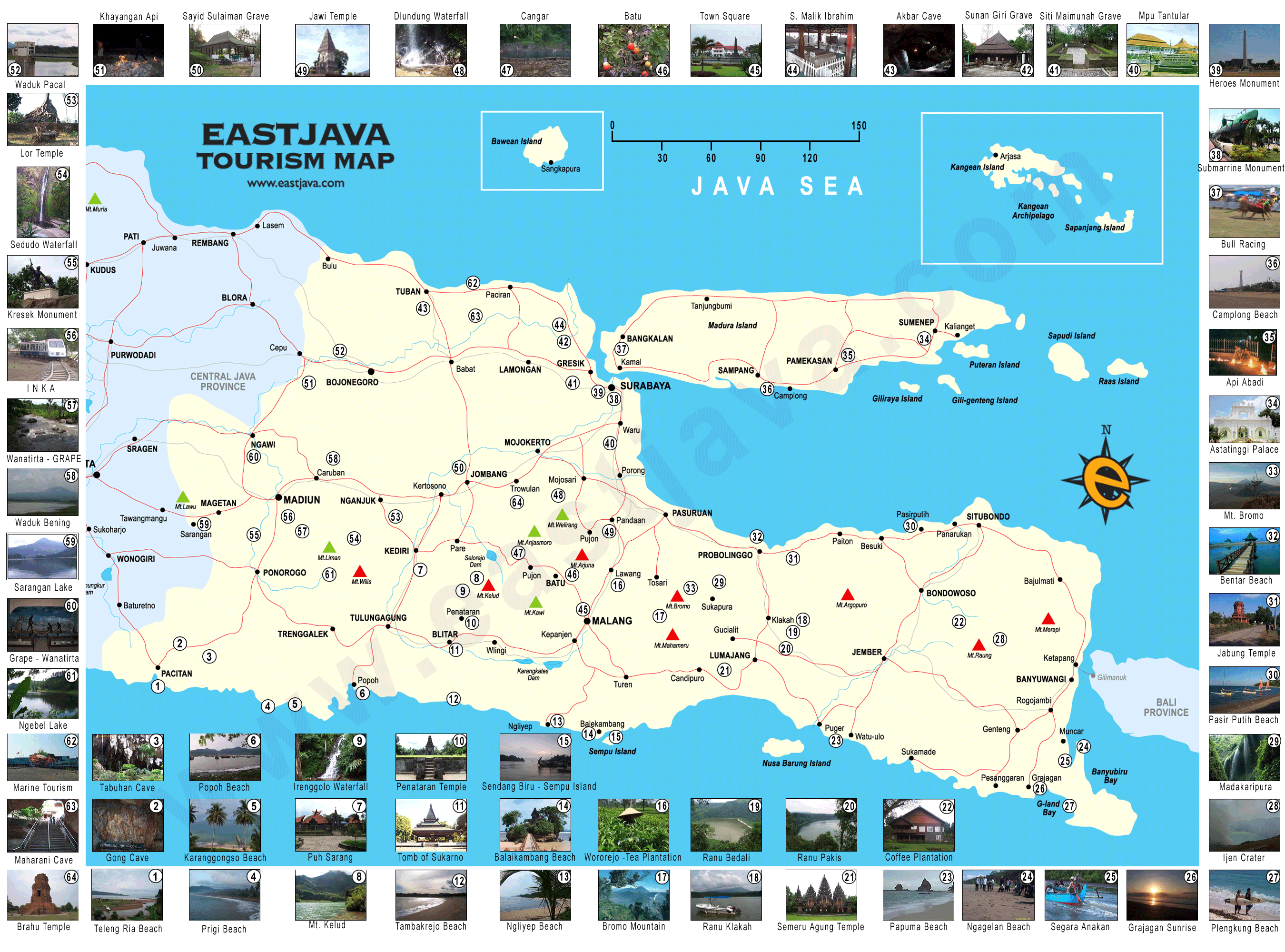East Java
Its capital is Surabaya, the 2nd largest city in Indonesia and a major industrial center and port. It covers an area of 47,922 km2. At the 2010 Census, the province's population was 37,476,000.
It has a land border only with the province of Central Java to the west, being surrounded by sea on all other sides.
 East Java's history dates back to the famous ancient kingdoms of Kediri and Singosari, which is now a city near Malang. The Majapahit empire, centered at Trowulan, Mojokerto East Java, is celebrated by Indonesians as the golden age of the archipelago. Most of the Eastern Java region was part of the Mataram Kingdom during its peak, apart from the Kingdom of Blambangan at Java's far eastern end nearest to Bali.
East Java's history dates back to the famous ancient kingdoms of Kediri and Singosari, which is now a city near Malang. The Majapahit empire, centered at Trowulan, Mojokerto East Java, is celebrated by Indonesians as the golden age of the archipelago. Most of the Eastern Java region was part of the Mataram Kingdom during its peak, apart from the Kingdom of Blambangan at Java's far eastern end nearest to Bali.East Java is administratively divided into 29 regencies, together with 9 cities (or kotamadya) that are independent of the regency in which they sit.
According to the 2000 census, East Java has 34,765,993 inhabitants, which had increased to 37,476,011 at the 2010 Census, making it the 2nd most populous Indonesian province after West Java. The inhabitants are predominantly ethnically Javanese. Native minorities include migrants from nearby Madura, and distinct Javanese ethnicities such as the Tengger people in Bromo, the Samin and the Osing people in Banyuwangi. East Java also hosts a significant population of other ethnic groups, such as Chinese, Indians, and Arabs. In addition to the national language, Indonesian, they also speak Javanese. Javanese as spoken in the western East Java is a similar dialect to the one spoken in nearby Central Java, with its hierarchy of high, medium, and low registers. In the eastern cities of Surabaya, Malang, and surrounding areas, a more egalitarian version of Javanese is spoken, with less regard for hierarchy and a richer vocabulary for vulgarity.
Hinduism and Buddhism once dominated the island, however Islam, gradually supplanted Hinduism in the 14th and 15th centuries. The last nobles and loyalists of the fallen empire of Majapahit fled from this point to Bali. Islam spread from northern cities in Java where traders from Gujarat, India brought with them Islam. The eastern part of East Java, from Surabaya to Pasuruan, and the cities along the coast, and back to Banyuwangi to Jember, are known as the "horseshoe area" in context with earlier Muslim communities living there.
| Pockets of Hinduism streams of Islam and Hinduism | remain, and syncretic abangan remain strong. |
| East Java will build 4 Gresik, Probolinggo and | seaports by 2013 in Lamongan, Banyuwangi. |
East Java supports several regional media outlets. Local newspapers with provincial news reach their readers earlier than their competitors from Jakarta. In the spirit of "providing more news from around readers", most newspapers even issue municipal sections which are different among their distribution areas.
| East Java cuisine tends Central Java. | to be saltier than that of - |
Related Sites for East Java
- Visit East Java : is The Real Tropical Country of Indonesia Tourism read East Java
- Visit East Java : is The Real Tropical Country of Indonesia Tourism read East Java
- Audax East Java read East Java
- East Java, Indonesia : A Tropical Paradise in The World. Find … read East Java

No comments:
Post a Comment